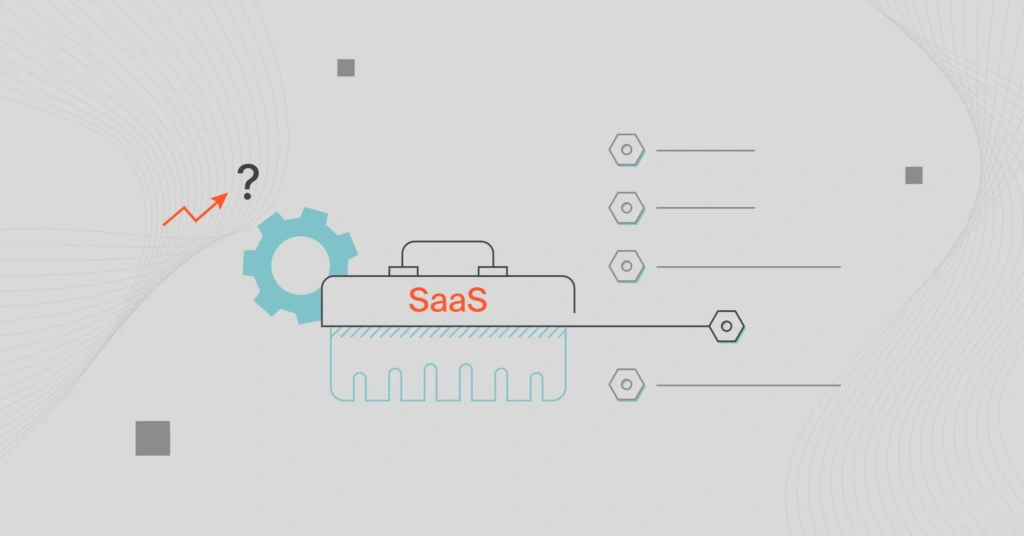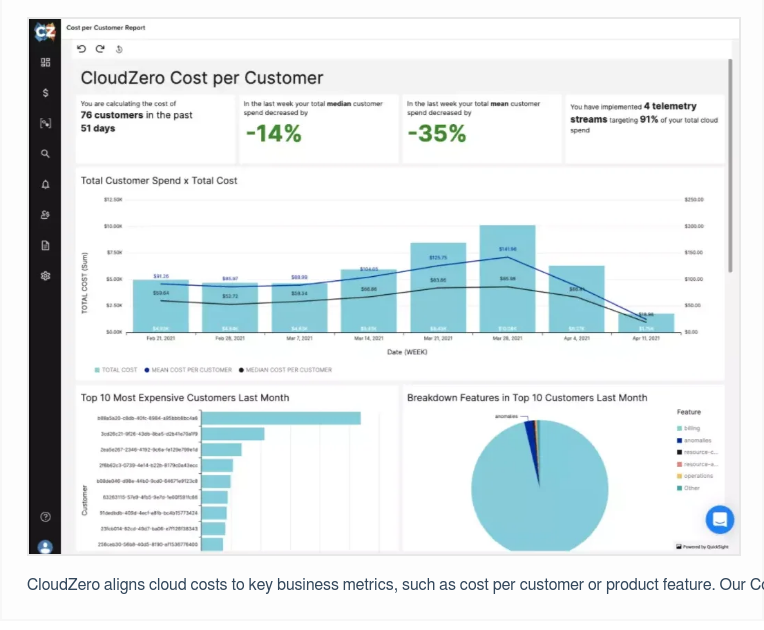Successful SaaS companies know that they can’t rely on gut feelings alone to make business decisions. Data helps them uncover patterns, trends, opportunities, and potential gaps in their strategy that can give them a competitive advantage.
Yet, simply collecting metrics can often give you a lot of data to analyze with little insight into what to do next. While there are key SaaS metrics to measure at every point of your business-growth process, some SaaS metrics maintain their importance across all stages.
We’ve discussed some key SaaS metrics for SaaS finance here. In this post, we’ll walk you through the most important SaaS reporting metrics and some of the best SaaS reporting tools you can use right now to get started.
SaaS Reporting Metrics You Should Monitor
1. Net monthly recurring revenue (MRR)
Like most SaaS businesses, you likely charge your customers on a monthly subscription basis. Monthly Recurring Revenue (MRR) measures how much revenue your current customers generate for you each month, regardless of whether you have several pricing tiers or just one.
MRR is also extremely helpful in calculating other crucial SaaS metrics for reporting, such as Annual Recurring Revenue, Gross Margin, Net Monthly Growth Rate, and SaaS P&L.
2. Net monthly recurring churn
Net monthly recurring churn rates measure the lost revenue, bookings, and other measurable values over a defined period. Here are examples of churn:
Customer Churn
Customer churn is the percentage of your customers who don’t renew their service plans with you (renewal rate). Customer churn is also known as customer defection, customer attrition, and customer turnover rates.
A SaaS business should also track specific churn indicators, such as reducing revenue resulting from both downgrades and canceled subscriptions.
If your downgrade rates are high, this could show that your highest plans may not be as appealing as your competition’s, or they are too expensive for your target customers. It is also possible that customers flock to your lowest pricing tier because you are undervaluing your services by offering all-inclusive basic plans.
Revenue churn
Revenue churn is the amount of revenue you lose over a specific period compared to a previous period. Your revenue retention rate is the percentage of income you keep from recurring subscriptions.
If your RC is over 10% every month, you may have a problem that needs immediate attention.
3. Cost of goods sold (COGS)
Cost of Goods Sold (COGS) is the direct cost of building and supporting the running of your everyday subscription-based services. By calculating COGS, you can determine how much you spend on things like AWS to generate revenue. The higher your COGS, the lower your profit margin will likely be, so it’s important to keep this metric as low as possible.
It is also common for SaaS companies to over-report their costs of goods sold because they are unsure of what metrics they should include. Others confuse operating expenses (OPEX) with the cost of goods sold (COGS), which has negative implications that could reduce their share price.
4. Unit costs
There is more to analyzing the unit economics of SaaS than measuring the Average Revenue Per Account (ARPA). The following metrics will help you determine how to optimize how much you spend supporting your customers in ways you may have never considered previously.
- Cost per customer – This is how much you spend to support each customer’s services. With this insight, you’ll know who your most expensive or least profitable customers are so that you can review your contracts with them — or decide if you need to change your pricing model.
- Cost per feature – This shows you the cost of building and supporting a particular feature of an app, so you can decide which features to add to higher plans, offer on their own, or decommission if they are not popular.
- Cost per project – This metric gives you a detailed look at the costs associated with a particular project. Then, you can compare your performance with industry standards to identify where you might need to improve to avoid eating into your margins.
- Cost per team – This cost insight is helpful for determining which teams’ workflows you want to replicate and which ones you want to iterate to optimize your technology costs.
These SaaS cost reporting metrics can help you determine how to optimize your gross margin while still appealing to cost-conscious customers.
5. CAC payback period
The Customer Acquisition Cost (CAC) payback period is the time it takes a SaaS company to recoup all the sales and marketing costs it used to gain one customer. Investors are also interested in this metric because it lets them know when to expect a return on their investment.
Generally, a CAC payback ranges from 5 to 7 months for SaaS businesses, but SaaS enterprises usually have a longer CAC payback due to raising more funding.
6. Expansion revenue rate
The expansion revenue rate refers to the additional revenue you generate from existing customers, such as from upsells, upgrades, and so on.
The metric can help you develop strategies to encourage upsells and upgrades so you can maintain a high monthly expansion revenue rate that will mitigate the effects of a high churn rate.
So, how do you collect these SaaS KPIs in a way that relates to your business outcomes?
5 Top SaaS Reporting Tools You Can Use To Get Started
SaaS reporting tools give you one place to collect, enrich, analyze, and visualize the most critical metrics for your unique business. We’ve compiled a list of top SaaS reporting tools to help you.
1. CloudZero
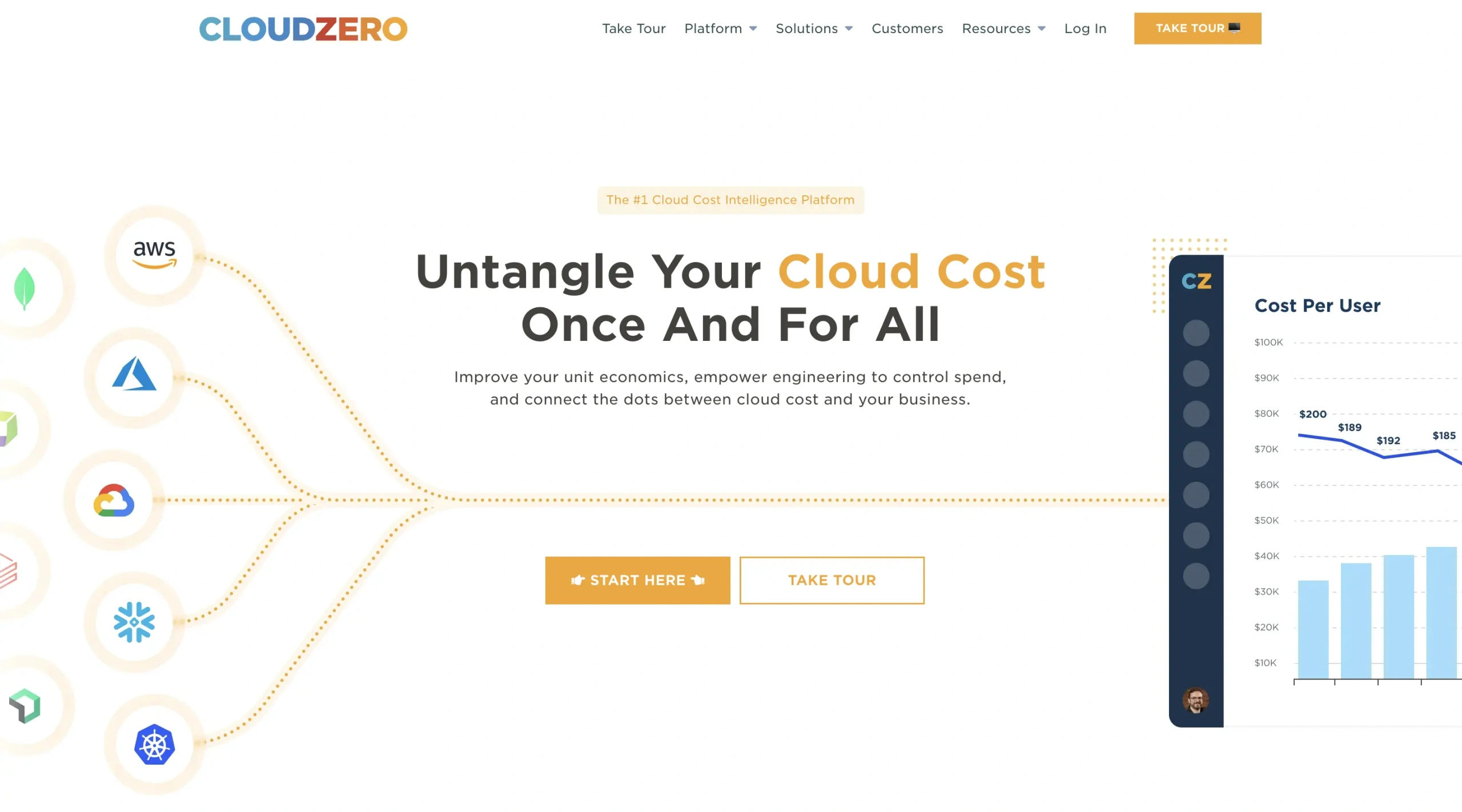
If you are looking to measure, monitor, and control your SaaS unit economics — as well as see how your unit costs relate to key metrics and outcomes — CloudZero can help.
CloudZero’s Cloud Cost Intelligence platform automatically aligns cloud spend to the metrics businesses care about like COGS, cost per feature, customer, product, team, environment, and more.
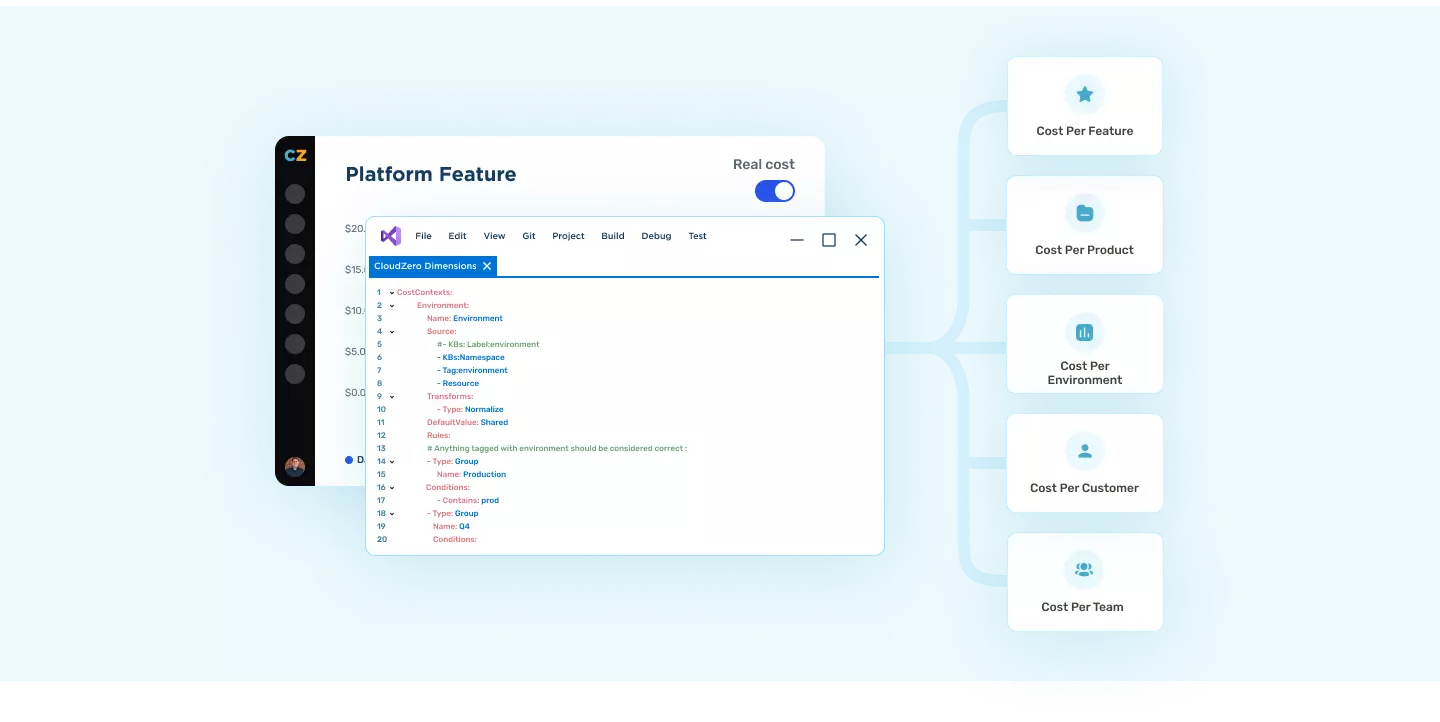 Better yet, CloudZero takes a unique code-driven approach to organizing cloud spend that empowers your organization with cost intelligence in just a few hours — versus the weeks or months it could take you to properly tag your environment.
Better yet, CloudZero takes a unique code-driven approach to organizing cloud spend that empowers your organization with cost intelligence in just a few hours — versus the weeks or months it could take you to properly tag your environment.
CloudZero provides immediate visibility whether your tags are perfect or a total mess — with cost intelligence built on the business dimensions you care about. Schedule a demo today to learn more.
2. ChartMogul
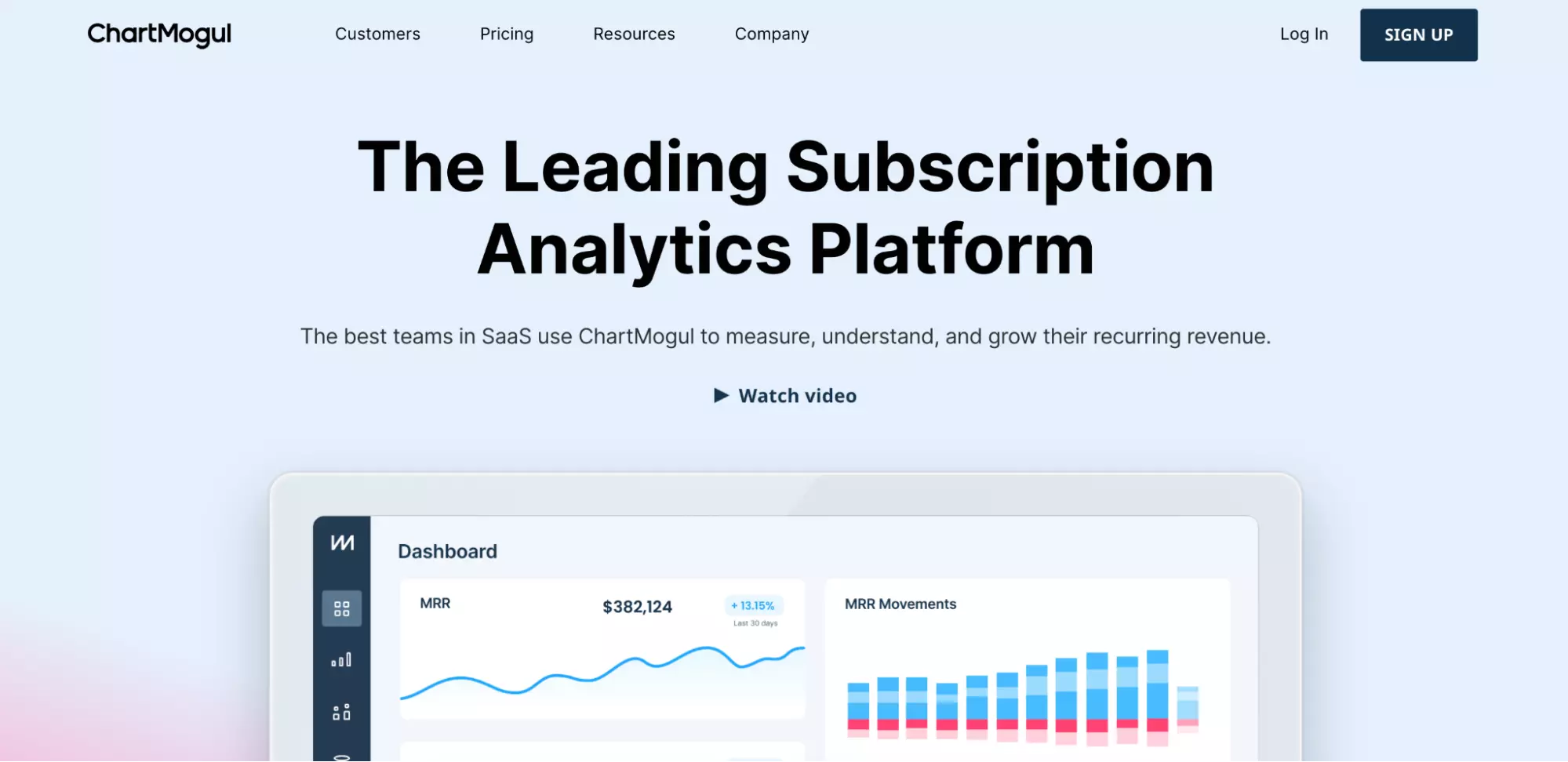
The ChartMogul subscription analytics platform automatically combines metrics APIs, webhooks, and data warehouses for gathering and enriching your most important metrics, including MRR, churn, net cashflow, subscribers, and more.
ChartMogul also lets you edit your MRR, merge customers, and link related subscriptions to get accurate data. After that, you can see everything in easy-to-digest insight on recurring revenue.
3. Paddle
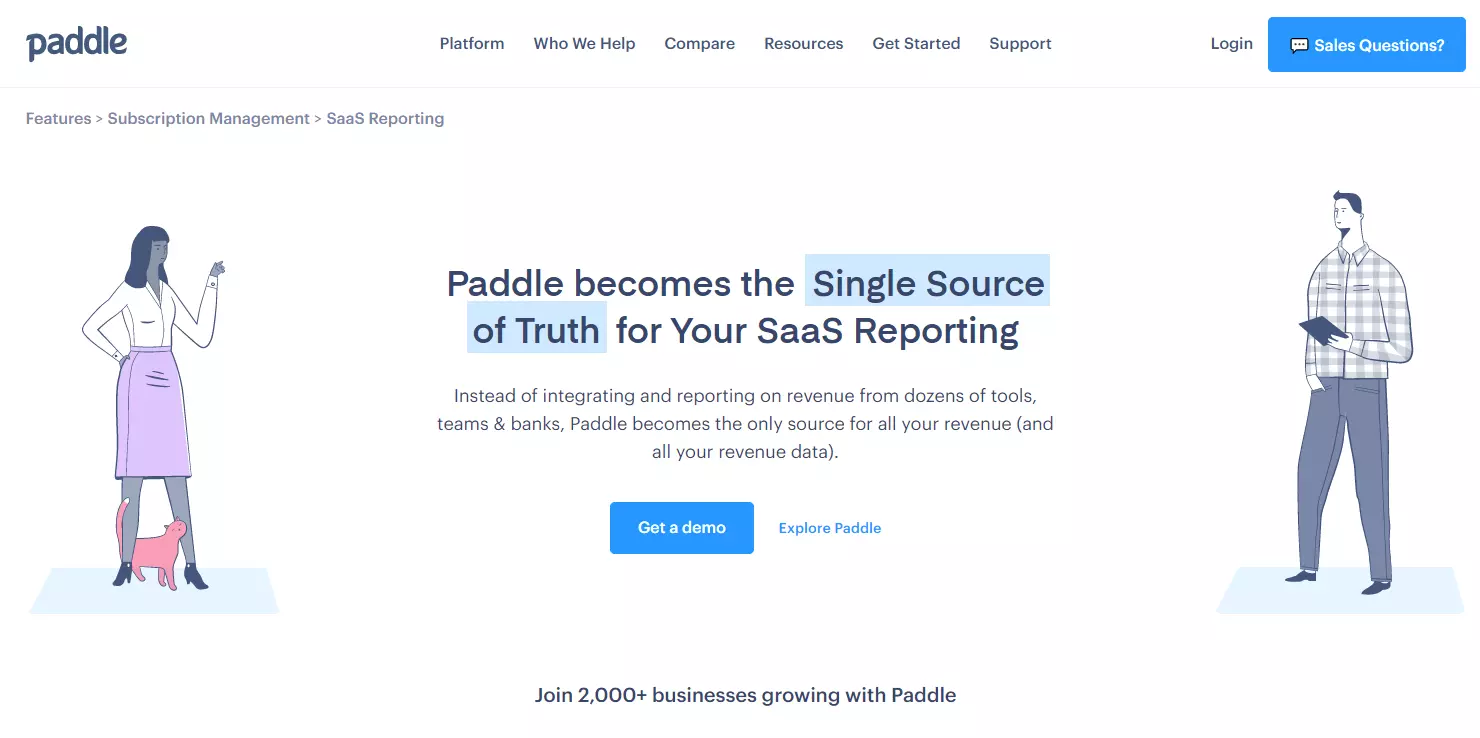
The Paddle Revenue Delivery Platform enables startups and scale-ups to make sense of their subscription data so they can turn their software product into a software business right from the start.
The SaaS reporting tool will connect to your billing, payments, and sales tax compliance methods. In addition, the software will reconcile the collected data with subscription and account data to calculate vital insights such as MRR movement, top customers, and top geographies.
You can then use Paddle’s reports to suggest ways forward, such as creating new upgrade flows, billing models, and subscription pricing.
4. Baremetrics
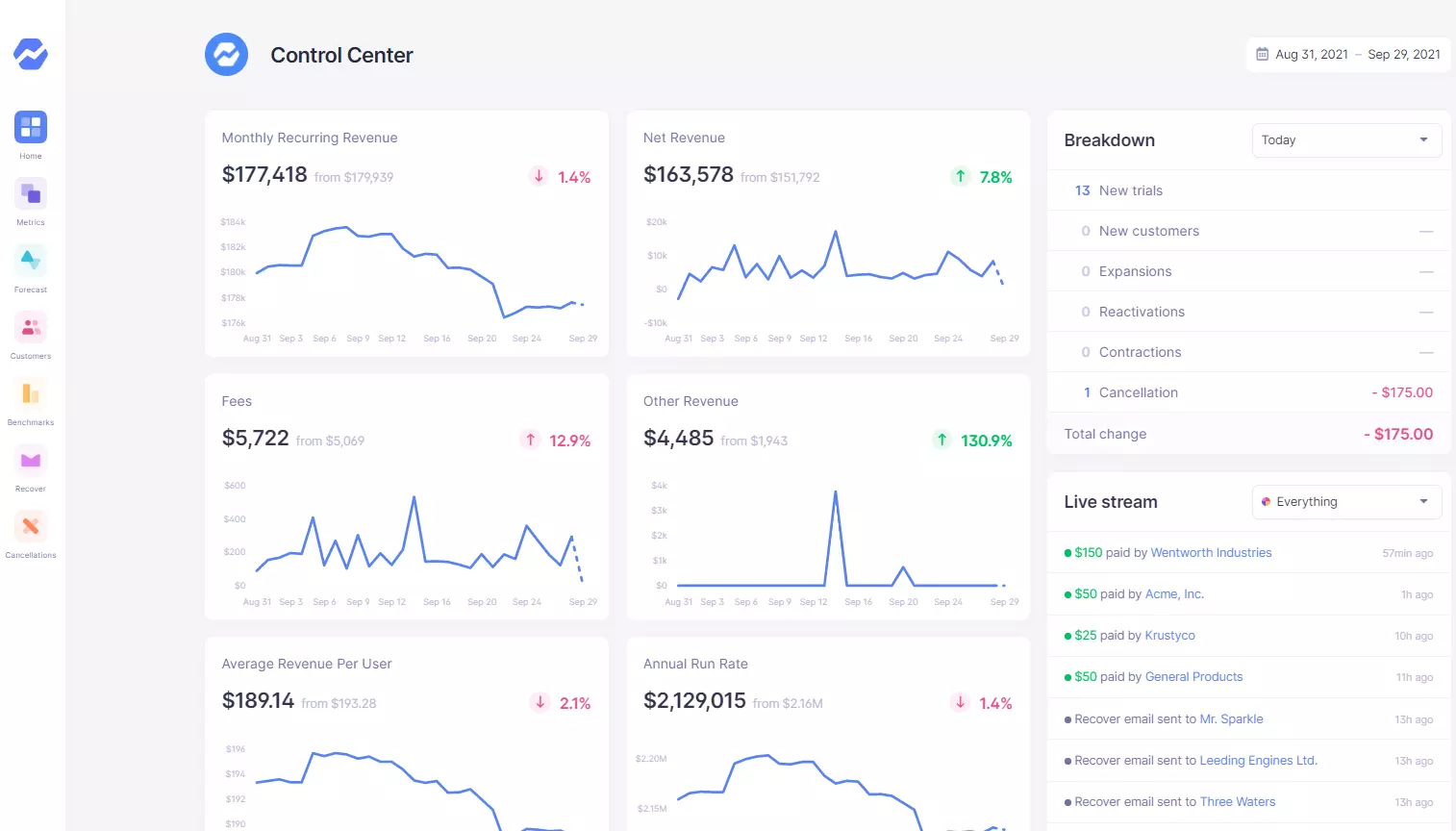
With Baremetrics, you can deep dive into your metrics to understand what drives your SaaS business. Several relevant reports are available, such as MRR (B2B and B2C), Net Promoter Score (NPS), Lifetime Customer Value (LCV), churn charts, and forecasts.
It also lets you segment your customers, assess each segment’s performance, and benchmark your metrics against those of similar companies in your industry. Baremetrics integrates with other tools to help you gain a deeper understanding of how your SaaS business operates — backed by solid data.
5. ProfitWell
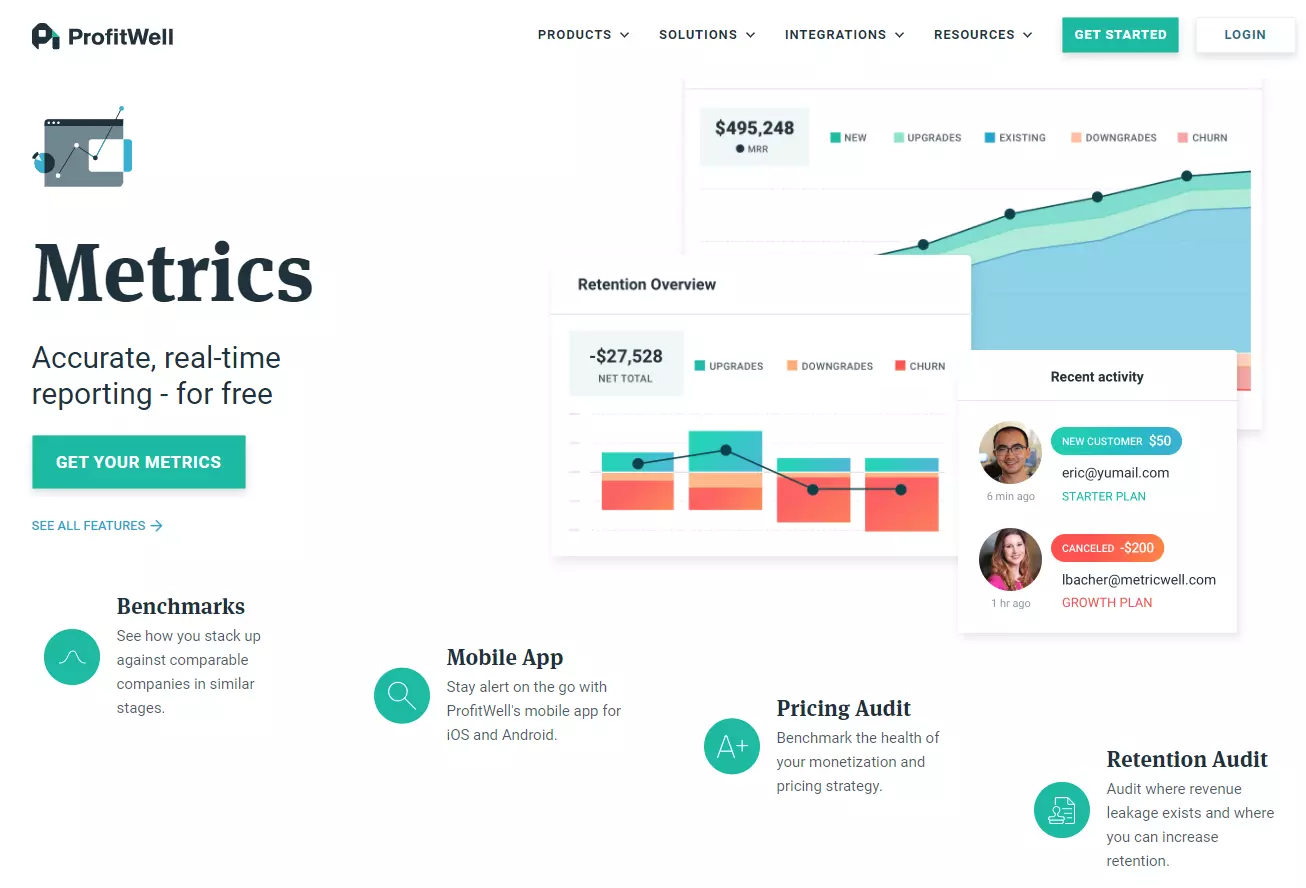
ProfitWell offers a solid platform for optimizing your SaaS recurring revenue if you are looking for a single source of truth for your most important metrics (except cost intelligence).
Tools like Reactivations can help you discover personalized offers to win back canceled customers. Revenue Recognition lets you generate audit-proof revenue reports. You can use SMS Churn Recovery to bring back customers whose payments have failed.
Using these tools together will help you uncover data-backed insights into your customers’ shopping and subscriptions to better optimize your gross revenue – from upgrades, downgrades, and reactivations to trials, active subscribers, and your MRR.
Measure Unit Costs, Cost Per Customer, And COGS Metrics
If understanding your COGS and unit costs like cost per customer, feature, product, and more, are important to you, CloudZero is the cost intelligence platform that can help.
With CloudZero, you can map SaaS costs to business outcomes, allowing you to understand the metrics affecting your margins the most. to see how it works!
to see how it works!

